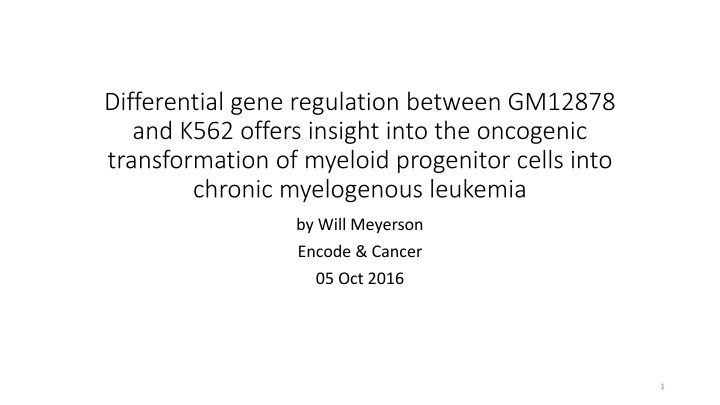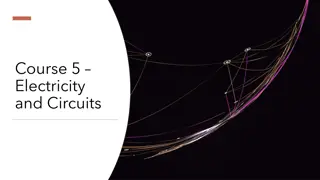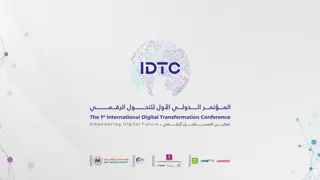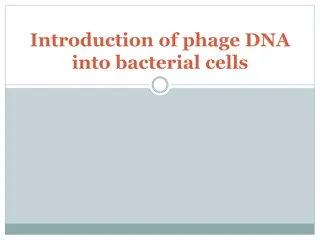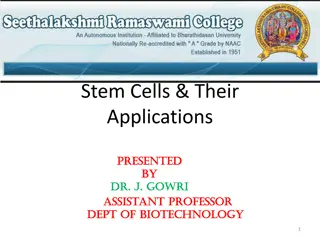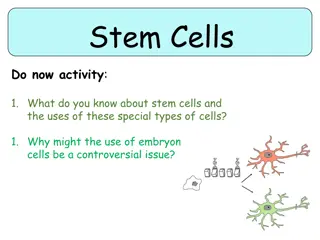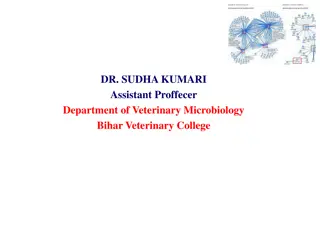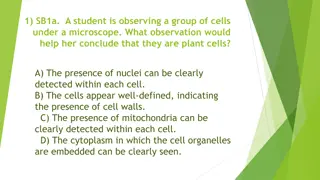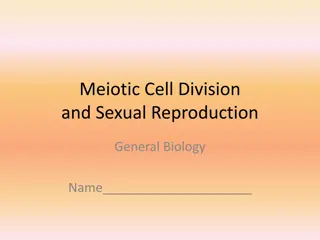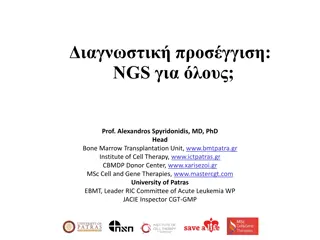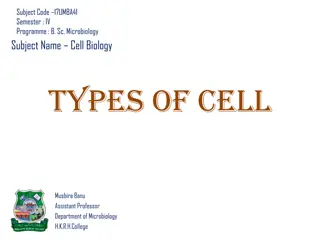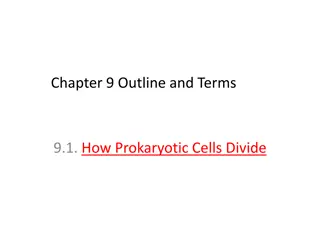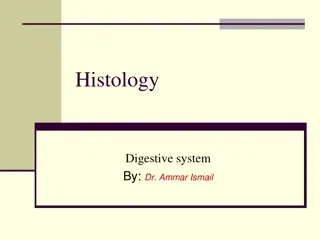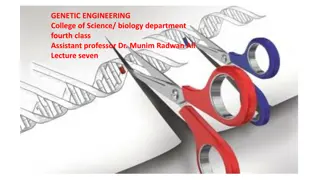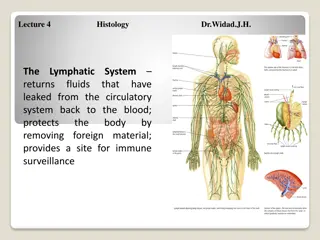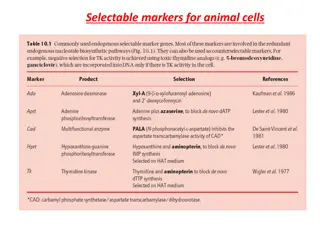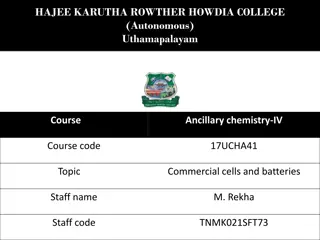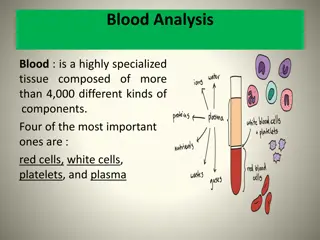Insights into Oncogenic Transformation of Myeloid Cells
Differential gene regulation between GM12878 and K562 offers valuable insights into the oncogenic transformation of myeloid progenitor cells into chronic myelogenous leukemia. Leveraging data-rich cell lines, such as GM12878 and K562, helps understand the epigenetic changes involved in this transition, shedding light on the vast array of epigenetic alterations in chronic myelogenous leukemia.
Download Presentation

Please find below an Image/Link to download the presentation.
The content on the website is provided AS IS for your information and personal use only. It may not be sold, licensed, or shared on other websites without obtaining consent from the author.If you encounter any issues during the download, it is possible that the publisher has removed the file from their server.
You are allowed to download the files provided on this website for personal or commercial use, subject to the condition that they are used lawfully. All files are the property of their respective owners.
The content on the website is provided AS IS for your information and personal use only. It may not be sold, licensed, or shared on other websites without obtaining consent from the author.
E N D
Presentation Transcript
Differential gene regulation between GM12878 and K562 offers insight into the oncogenic transformation of myeloid progenitor cells into chronic myelogenous leukemia by Will Meyerson Encode & Cancer 05 Oct 2016 1
Myeloid cells transform into CML. Leverage their respective most similar data-rich cell lines to understand the epigenetic changes involved in this transition. One major genetic change data poor data poor Oncogenic transformation Chronic myelogenous leukemia Myeloid progenitors Vast array of epigenetic changes GM12878 K562 Differential gene regulation DaTA rIcH DaTA rIcH 2
Using K562 to represent CML is uncontroversial. K562 is derived from a CML line There are over a thousand PubMed entries that mention K562 and CML together K562 is a Tier 1 ENCODE cell line with data of 23 different types available from ENCODE s first production phase, including data about DNA methylation, chromatin accessibility, RNA binding proteins, RNA profiling, transcription factor binding, and many other features 3
Our choice of GM12878 to model CMLs cell of origin requires more explanation, but we maintain it is well-suited for this purpose. Gene expression correlation analysis shows GM12878 to be the closest of 22 cell lines to CML s cell-of-origin, by a wide margin Although GM12878 does not exactly map embryologically onto CML s cell-of-origin, it is sufficiently embryologically related for our purposes Like K562, GM12878 is a Tier 1 ENCODE cell line and has been similarly richly interrogated, with 21 available data types We are prepared to filter out the most important artifacts that may arise from differences between GM12878 and myeloid progenitor cells 4
GM12878 is the closest of 22 cell lines to CMLs cell-of-origin, by a wide margin. Spearman correlation of gene RPKMs between Roadmap Peripheral_Blood_Mononuclear_Primary_Cells and each of 22 Roadmap and ENCODE cell lines Roadmap offers RNA-seq data that was uniformly processed for 22 cell lines and multiple normal cell samples, including normal myeloid cells. Of all 22 cell lines, GM12878 is the cell line whose gene expression is most similar to normal myeloid cells, exceeding the next most similar cell line by >1.5 standard deviations. 0.78 0.76 0.74 0.72 0.7 0.68 0.66 0.64 0.62 0.6 5
GM12878 is embryologically similar to CMLs cell of origin. Exact lineage identity is unnecessary. B-cells (like GM12878) and myeloid progenitor cells are so closely embryologically related that they occupy the same node on the tree at bottom left Nonetheless, embryological closeness is not a necessary condition for phenotypic similarity: Bones of the facial skeleton and bones of the axial skeleton are so phenotypically similar that a damaged jaw can be reconstructed with a patient s fibula, and yet they derive from different germ layers (ectoderm and mesoderm, respectively), the most distant possible embryological lineages. 6
GM12878 far outstrips alternative candidate cell-lines in the richness of its data From the ENCODE Human Data Matrix of ENCODE s first production phase Integration of different data types is a key priority in our analysis Of 25 experiment types, 21 are listed available for GM12878 In contrast, neither any ENCODE myeloid lineage derived cell type nor any ENCODE untransformed lymphoid lineage cell is listed with more than 4 experiment types 7
We have the tools to filter out the most likely spurious findings from our analysis Between GM12878 and monocytes, only 0.62% of genes (122 of 19,795) are expressed in the top quartile of one and the bottom quartile in the other, >20X lower than expectations (2*0.25^2 = 12.5%) We are discussing blacklisting changes in these genes expression from our analysis pipeline Other filtering discussion are ongoing in our laboratory 8
Conclusion To paraphrase George Box: All models are approximations. Our approximation is useful. Among ENCODE s top-tier cell lines, K562 represents CML, and GM12878 is suitably similar to CML s cell-of-origin in virtue of its: RNA expression Sufficient embryologic relatedness Opportunities for artifact filtering Our model choices give us the ability to integrate an unprecedented range of data types towards understanding the transformation of a cell into its cancerous form 9
References http://www.nature.com/nature/journal/v489/n7414/abs/nature1124 7.html http://www.nature.com/nature/journal/v518/n7539/full/nature1424 8.html http://onlinelibrary.wiley.com/doi/10.1002/ijc.2910230202/full https://www.ncbi.nlm.nih.gov/pmc/articles/PMC2975965/ http://onlinelibrary.wiley.com/doi/10.1002/rcs.456/full http://www.sciencedirect.com/science/article/pii/S00039969020020 8X 10
